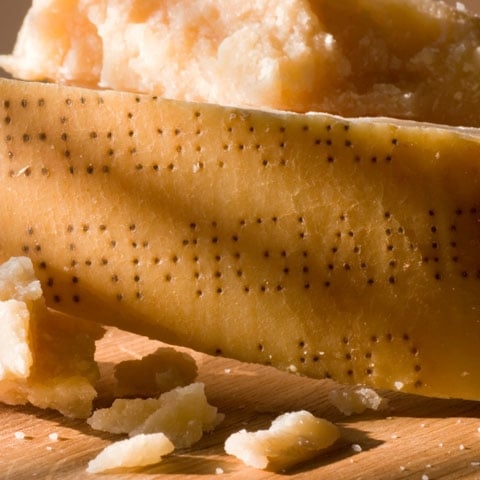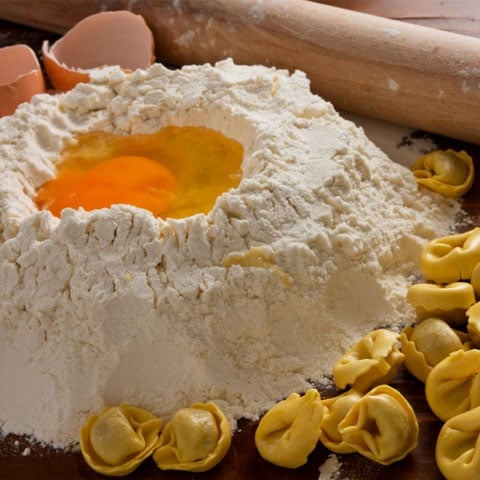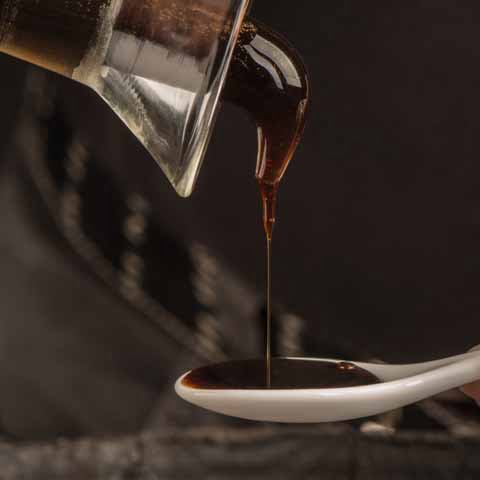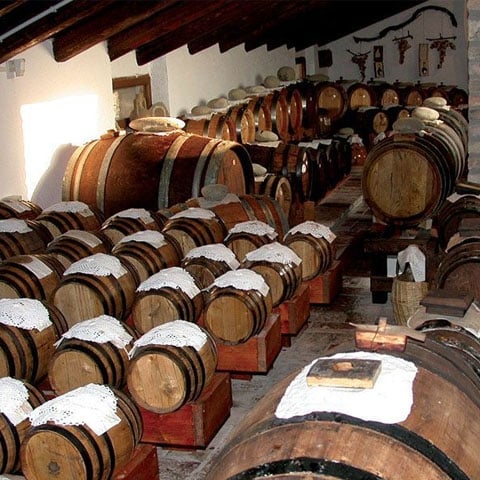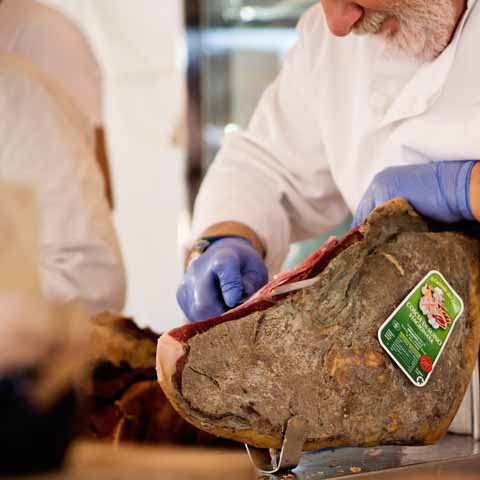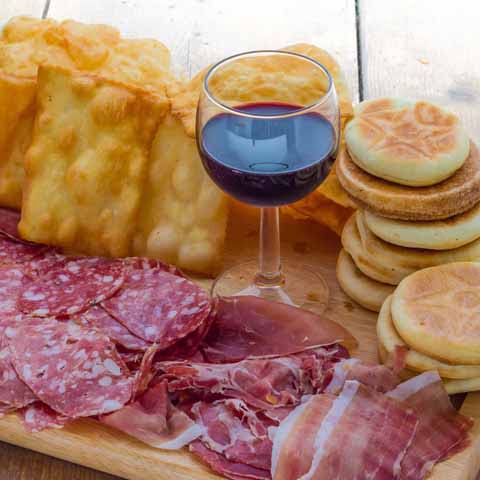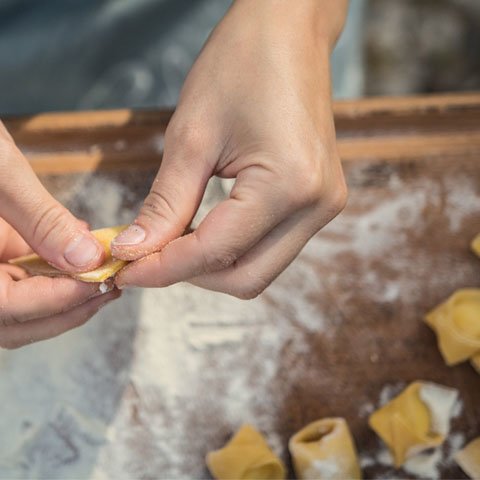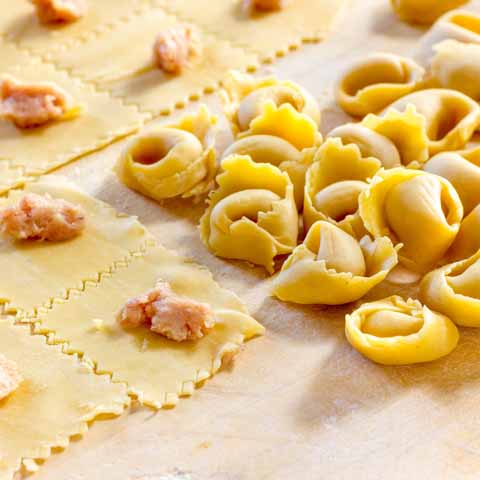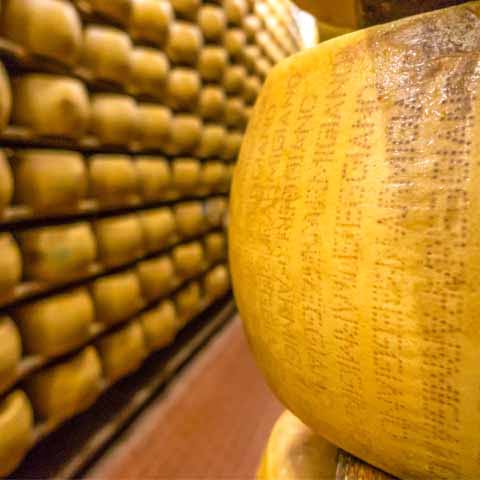Emilia Romagna is famous worldwide for many reasons, and one of the main reasons is food. The culinary tradition in the region is seen as almost an art form, and from all the regions of Italy, Emilia Romagna is probably the richest in exquisite dishes and delicious wines.
Some of the typical products of Emilia Romagna are popular all over the world, including Parmigiano Reggiano and Prosciutto di Parma, two of the top products of the Italian tradition. But Emilia Romagna also has other unique delicacies, such as the balsamic vinegar of Modena that pairs well with both salty and sweet foods.
On the other hand, since the earliest times, Emilia Romagna has been a land of foodies. In fact, no other region represents the Italian culinary tradition better than this beautiful territory. As such, it isn’t a coincidence that Pellegrino Artusi, the author of the famous book “The Science of Cooking and the Art of Fine Dining” was born here.
His book laid the foundations of a national scientific gastronomy which transformed cooking into an art. The art of cooking in Emilia Romagna is based on the strong relation people have with their land. Many local products represent the valorization of all resources and, as in many other regions, wasting food is almost a sin.
Besides amazing food and delicious wines, Emilia Romagna also boasts the oldest tavern in the world, called osteria in Italian. Located in Ferrara, the place is now called Enoteca Al Brindisi, yet it was born in 1435 and it was initially called Hosteria del Chiucchiolino.
The tavern is located in a narrow alley next to the Cathedral of Ferrara, and its nearly 600 years of history brought it recognition in the Guinness Book of Records. The destination has remained the favorite of many locals and it has been owned and operated by the Pellegrini family since the late 1950s.
Another place to taste the local excellence is Osteria Francescana managed by chef Massimo Bottura. The chef was born and raised in Modena and his restaurant was classified on the top 5 list of world restaurants in 2010. Since then, the chef improved his gastronomic selection and brought his culinary art to perfection, winning the title of the best restaurant in the world in 2016.
Despite its name, this restaurant located in Modena is not a tavern. Boasting three Michelin stars, it is far from being economic, yet dining here will certainly provide an unforgettable experience.
Emilia Romagna is the land of various types of salami, sausages and other cured meats, such as prosciutto and culatello. The region also boasts some of the best hard cheeses in the world.
As such, there is no wonder why one of the main appetizers in the region is a tray of cold cuts, called tagliere. This dish often contains all of the exquisite cured meats of the region, such as Prosciutto di Parma, Culatello di Zibello, Mortadella di Bologna, Pancetta Piacentina, and Pancetta Canusina.
A few particular types of salami to taste are Salame di Felino, made of low-fat meat mixed with pancetta, and fiocchetto, a unique type of salami made of pork shoulder and lard.
Other delicacies are Prosciutto di Modena and Coppa Piacentina, two DOP types of salami that are usually included in a tagliere.
Besides salami and cured meat, a tagliere usually contains at least a few types of cheeses. Among the most famous we can mention Parmigiano Reggiano.
Parmigiano Reggiano is mainly produced in the provinces of Parma, Modena, Bologna and Reggio Emilia, and its history dates back to the Middle Ages. Since then, the recipe never changed and the unique flavor made this cheese famous all over the world.
Another exquisite cheese to taste is formaggio di fossa di Sogliano, mostly produced in Sogliano al Rubicone. This type of cheese is matured in pits and is made with sheep or mixed milk. This cheese is so important for the people in Sogliano that every year the municipality organizes a sagra in honor of this product.
Robiola is another delicious cheese, while if you love soft cheeses, Squacquerone di Romagna might conquer your taste buds forever.
Both cheese and salami are typically served with balsamic vinegar icing and a wide variety of nuts or vegetables.
Without a doubt, Emilia Romagna is famous for its exquisite first courses. The region is the realm of stuffed and egg pasta, and among the most famous we can mention are lasagna, tortellini, and cappelletti, to name just a few.
Tortellini are usually stuffed with loin or ham, with Parmesan cheese or with nutmeg and mortadella, while cappelletti, a pasta very similar to tortellini, are stuffed with beef, ricotta, and Parmesan cheese. Stuffed pasta is cooked and served in many variations, and the imagination of the locals has no limits.
A tasty variation to try is timballo di tortellini, an exquisite first course made with tortellini and served with a salsa made of tomato sauce, boiled eggs, mushrooms, and eggplant. Tortelli nella lastra is another unique dish made with tortellini stuffed with pumpkin, potatoes and sometimes spinach.
In Ferrara, cappellacci ferraresi is a must-try. This pasta shaped as tortellini is stuffed with pumpkin, nutmeg, and egg.
Another traditional type of stuffed pasta are anolini, originally stuffed with donkey meat. Ravioli are usually stuffed with herbs and spinach or beet.
These types of stuffed pasta are seasoned with sauces made with fresh vegetables or served in broth, depending on the season. During winter tortellini are usually served with beef broth, although some recipes may also use chicken broth. Ravioli and crespelle pasta, on the other hand, are usually served with melted butter and a sprinkle of Parmesan cheese.
Only a few recipes promote the use of cream and pancetta in the preparation of various toppings and sauces.
Other types of traditional pasta are the long egg pasta, such as tagliatelle. Similar to a ribbon, this type of pasta is better served with the famous Bolognese sauce, a symbol of the gastronomic tradition of Emilia Romagna. The sauce is one of the most famous tomato sauces in Italy and it has a complex preparation. The main ingredients are the minced meat of pork, calf, and beef, which are usually cooked in butter or olive oil. To add flavor, the recipe suggests using pancetta as well, and everything should be cooked in a mixture of wine and broth. The final touch of the dish is the adding of Parmesan cheese and tomato sauce.
Bolognese sauce is often used for the preparation of lasagnas as well. Besides the traditional lasagnas, some to taste in the region are the green lasagnas of Bologna and lasagna ferrarese served with a sauce made of minced beef and ham.
The tagliatelle, on the other hand, are served with chestnut sauce or truffles, especially in the area of Piacenza. The shorter type of pasta in Emilia Romagna is gramigna, usually served with a sauce made with fresh pork sausages and tomato sauce.
Pisarei e faso is a delicious first course to taste. The dish is made of gnocchetti and beans and it is inspired by the peasant traditions.
Among the soups of the region, we can mention passatelli, pasta rasa, and tardura, types of soups that combine fresh vegetables with local ingredients.
Lastly, pasticcio alla ferrarese is a delicious pie to taste. The dish is made of pastry stuffed with pasta, ragù, béchamel sauce, and truffles.
A unique type of soup to try is pigeon soup, made with rice, pigeon meat, chicken and pasta stuffed with pumpkin and herbs.
The gastronomic architecture of the main courses reflects the same opulent and delightful characteristics of the first dishes.
Famous and tasty all over the Italy is cotechino di Modena, a type of cured meat made with pork loin, fatback and pork rind. Zampone di Modena is a dish similar to cotechino that is rigorously served with lentils. Some special recipes of zampone substitute pork with beef and ham for a true explosion of flavors.
Salama da sugo ferrarese is another unique sausage made of coppa del collo, lard from the throat, liver, and pieces of meat from the head. Some recipes include the use of swine tongue, while other main ingredients are Sangiovese wine, marsala, and brandy. The sausage is flavored with cloves and cinnamon then boiled and served with mashed potatoes.
Another delicious main course is the veal stew, while another dish featuring veal as the main ingredient is pasticciata, a dish made with veal steak braised in wine and served with vegetables. Stracotto is another popular dish made with braised meat in wine and broth.
Costolette alla modenese is a popular main course in Modena and the province. These pork chops are braised in wine and lard and are served with cherry tomatoes. Cotoletta alla Bolognese, made with egg, ham, and parmesan is a tasty version of the popular cotoletta.
Game is also on the list of delicacies in Emilia Romagna, and probably the most popular type of game is rabbit, usually prepared alla cacciatora. According to the recipe, the meat is stuffed with lard and stewed in wine.
Other delicious main dishes to taste are picaja, calf meat stuffed with bacon, and also lamb chops with chestnuts.
The locals have a particular affinity for white meat such as chicken and turkey, two types of meat generally ignored in the other regions of Italy. Both minced chicken and turkey are sometimes used in the preparation of a lighter Bolognese sauce or made alla cacciatora Romagnola, stuffed with lard and pancetta and cooked in tomato sauce.
Some peculiar yet exquisite main courses are picula ‘d caval, a dish made with minced equine meat, and also the donkey stew.
Duck in honey sauce, duck breast with apples, wild boar, scalloped goose liver in marsala, snails in lard crust and hare in lard crust are only a few of the other meat-based main courses specific to the region. Trippa alla romagnola is a popular dish made with beef tripe.
Fish and eel are popular in the Delta of Po. There are countless recipes that vary from peculiar stews made with eel, raisins, and pine nuts to marinated eels.
In Ravenna, a popular choice includes frog meat, usually eaten in soups or stuffed and fried.
Side dishes in Emilia Romagna are usually based on seasonal vegetables, including the shallots of Romagna and the green asparagus of Altedo, among many others.
A popular side dish is fricò alla romagnola with squacquerone. The dish is made of various seasonal vegetables such as eggplant, tomatoes, zucchini, peppers and onions that are accompanied by squacquerone cheese.
Another exquisite side dish featuring squacquerone as the main ingredient is a rustic pie made with mashed potatoes, ricotta, squacquerone, parmesan, egg and bread crumbs, baked in the oven.
In winter, a popular side dish is a type of stuffed cabbage roll made with mashed potatoes, Montasio cheese, nutmeg, pepper, and other spices that are mixed together then rolled in boiled cabbage leaves and fried in extra virgin olive oil. The rolls are then placed in terracotta pots, covered with grated cheese and baked until all the cheese melts.
Desserts in Emilia Romagna are as unique as the food. Among them, the king of the regional desserts probably is the pampepato, made with honey, almonds, cocoa, cinnamon, and cloves. This delicious dessert is baked all over the region, although it is originally from Ferrara.
This dessert is usually baked during Christmas. There are various artisanal versions to taste, some of them including other ingredients as well, such as liquor, grape must, raisins, and more.
Torta di riso reggiana is another exquisite dessert made with rice cooked in milk and flavored with a wide variety of spices and other ingredients. A sweet tradition in Parma and the province is spongata di Parma made with hazelnuts, pine nuts, almonds, candied fruit, and honey.
Ciambella romagnola is a loaf cake made with wheat flour, butter, milk, and lard. The cake is covered in sugar and usually served with sweet wines. Many serve ciambella romagnola as an afternoon snack that pairs well with delicious Italian coffee.
During the carnival period, a delicious dessert to taste is sfrappole, a sweed made of fried dough covered in sugar. Although delicious, this sweet is spread throughout Italy and is one of the most popular carnival sweets in the entire country.
Squacquerone cheese is also used for dessert, and in this case, it is accompanied by caramelized figs and various jams.
In a region famous for its culinary tradition, street food is an important element. Among the many delicacies, the most popular street food is perhaps piadina, a type of thin flatbread made with white flour and lard. Many make piadina with olive oil, and it’s equally exquisite.
Piadina is usually stuffed with different fillings, but most often with local types of salami and cheeses.
Tigella is a unique type of street food guaranteed to impress. This dish is made of a type of focaccia baked exclusively in terracotta dishes from which it borrows its name. This type of bread is then stuffed with salami, cheeses and other delicacies.
Borlengo is one of the traditional street foods to taste at the festivals or fairs. This is a thin, almost ethereal pastry stuffed with lard and parmesan, a true delight that melts in the mouth.
Lastly, we can mention gnocco fritto, one of the most exquisite street foods of the region. This favorite street food consists of bread dough fried in lard, and it is absolutely delicious.
As one could expect, Emilia Romagna is a region famous for its wines. The main wines of the region are the reds, characterized by a refreshing flavor and sweet aromas. Unlike the reds of the other regions, those in Emilia Romagna don’t have full bodies, making them easier to pair with various foods.
Among all wines, Lambrusco is probably the most famous and is produced in many areas of the region. Lambrusco di Modena is one of the most popular, while Lambrusco Reggiano is another sparkling red characterized by a lighter, almost pink color.
Rosso Colli di Parma and Sangiovese di Romagna are two other flavorful red wines to taste while visiting the region.
The red wines of Emilia Romagna pair well with almost all main courses, and also with appetizers.
A delicate, fresh white wine is Bianco di Scandiano. Malvasia di Candia, Pignoletto, and Trebbiano are other typical types of white wines that pair perfectly with the local variety of cheeses or desserts.
